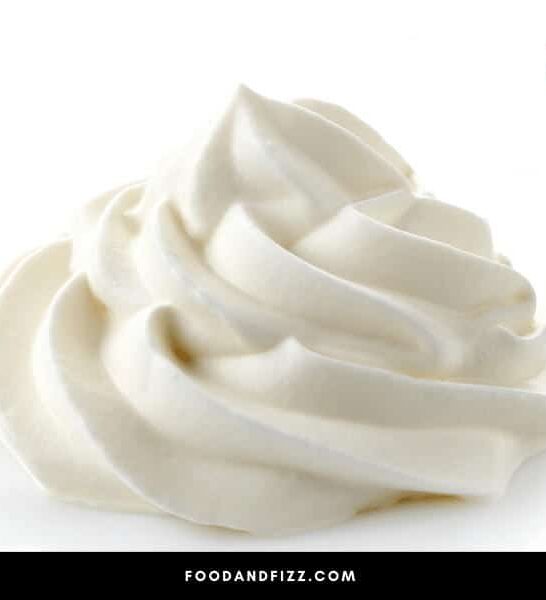In terms of taste, failed whipped cream is right up there with watery curry, dry cake, leathery fried eggs, and charcoal sausages. However, I’m not sure failed whipped cream has an equal in terms of looks.
The dire, soggy mess that looks like the real-life embodiment of “what the heck is this?” is so visually unappealing that few dare to accept the challenge and put the stuff in their mouth.
Is there anything we do to ensure that our whipped cream never goes so wrong that we suffer the ignominy of seeing our dinner guests shrink back from our sorry offering in fright or disgust?
Turns out, there is one overarching determinant of the success or failure of whipped cream, and that is how cold we keep it.
At Least How Cold Should You Keep Whipped Cream?
Keep whipped cream at room temperature (65°F) for no longer than two hours. Time has a marked impact on the effect of temperature on the production and storage of whipped cream. When two hours have elapsed, assume that it is no longer fit for human consumption and throw it away. For the cream to whip properly, you must maintain its temperature between 45°F and 54°F. Refrigerate as soon as possible after whipping the cream.

Cream Requires a Low Temperature to Whip Correctly
It’s a bit too early to worry about keeping whipped cream before you’re actually able to whip up some of the stuff in the first place. If your cream is higher than 50°F, you won’t have to worry about what temperature to store whipped cream because you won’t have any.
How Temperature Affects Whipped Cream–Fatty Facts
The cream is primarily made up of globules of fat. The creamier, the bigger the globs. Thin, weedy cream is full of small globules of fat, the exact opposite case for heavy, thick cream.
One of the most important physical factors that govern the size of blobs of fat in cream is temperature. The higher the temperature of the cream, the smaller its fat globules.
Metaphorically, when cream gets cold, its blobs of the fat crowd together for warmth, but when the cream is warm, those blobs of fat get “hot, sweaty, and bothered,” and so can’t stand being near other clumps of fat.
It’s a bit fantastic, but I believe it helps the less scientifically minded among us to get a generally accurate-enough impression of what’s going on at the molecular level.
For centuries, we’ve known that it has to be cold to whip cream properly. However, our recently acquired technological and scientific prowess has allowed us to subject the chemistry and physics of whipped cream to close scrutiny, resulting in a detailed understanding of what goes on as the cream undertakes its transformation from turgid lake to airy clouds of carefully crafted confectionary deliciousness.
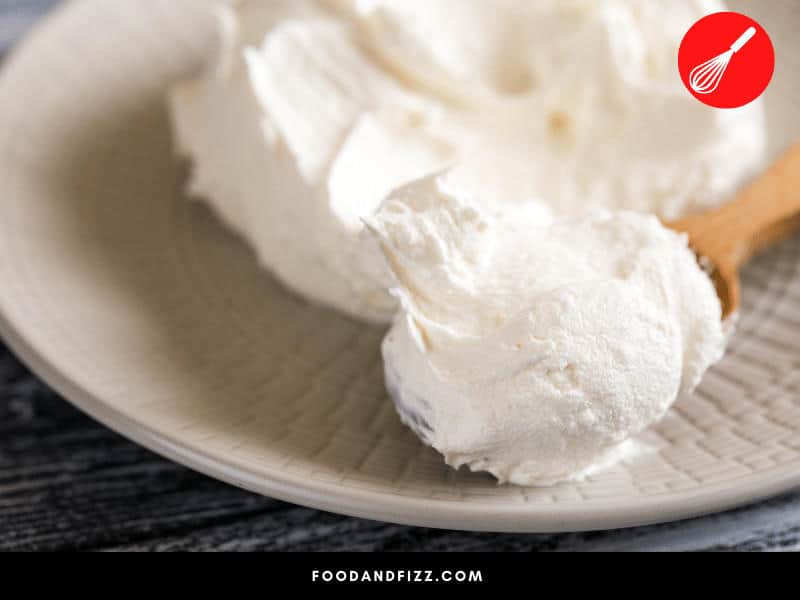
How Temperature Affects Whipped Cream–Airy Facts
If one vital part of whipped cream is its blobs of fat, the other crucial part is, of course, air. Air trapped in bubbles is what gives whipped cream its puffiness.
Globs of fat give whipped cream its substance, and air bubbles give whipped cream its artifice. We’ve found out now that temperature significantly influences the size of fat globules and the size, quantity, and quality of air bubbles.
The “quality” of air bubbles is not something I think most laypeople would know about, nor even causally conceive, but it is a thing. At the molecular level, air can be “sticky,” believe it or not, and sticky air bubbles can become a problem.
For example, if you were to chew gum that hadn’t been made properly, you could end up with one that didn’t give up its air bubbles easily.
The more you chewed on this gum, the stiffer it would get until, eventually, it would feel like you were chomping down on a piece of rubber from the tire of a truck.
To be a high-quality air bubble, the air in it has to be “slippery;” it has to give way as quickly and smoothly as possible, which is why it is the kind of air bubble we like in our whipped cream.
It makes whipped cream “smoother” and more “velvety.” These two words are actually our way of describing the experience of high-quality air bubbles.
When the cream is at its optimum temperature, we find that its air bubbles are their largest (so the cream is at its airiest) and it’s most slippery (so the cream is at its smoothest). It appears we achieve the absolute apex of quality when cream hits 45° – 54°F, and in this temperature range, whipped cream is at its most stable.
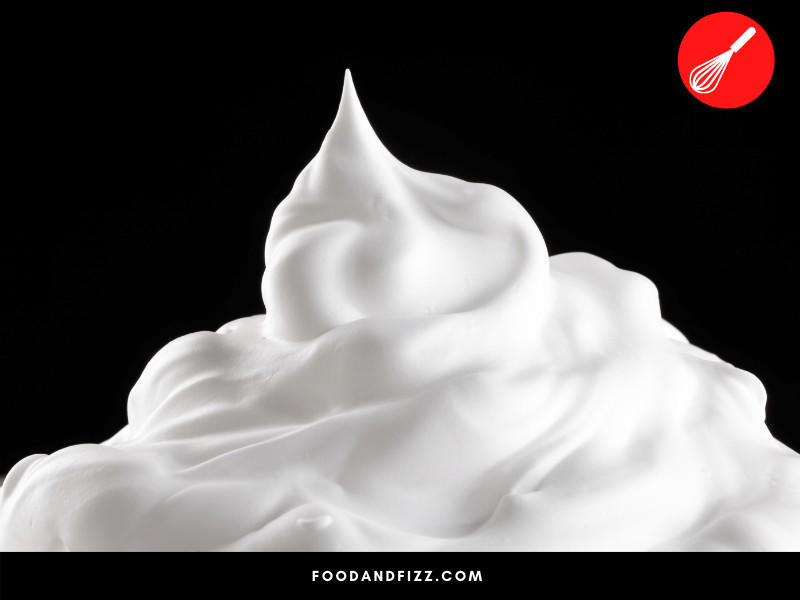
Other Unexpected Effects of Temperature on Whipped Cream
Straight from the Fridge vs. Standing for an Hour vs. Room Temperature
Experiments have shown that you get more whipped cream the longer you refrigerate cream. For example:
You get over two cups of whipped cream with stiff peaks from properly chilled cream with only a minute-and-a-quarter whipping.
You get barely two cups of whipped cream with somewhat grainy peaks from refrigerated cream that has been left out for an hour and whipped for nearly two minutes.
You get just three-quarters of a cup of whipped cream with zero peaks from room-temperature cream that’s been whipped for over two-and-a-half minutes.
Clearly, refrigerated cream wins hands down, producing better quality whipped cream and more of it with less effort than any other temperature configuration, so why would you make life hard for yourself and almost certainly guarantee poorer results?
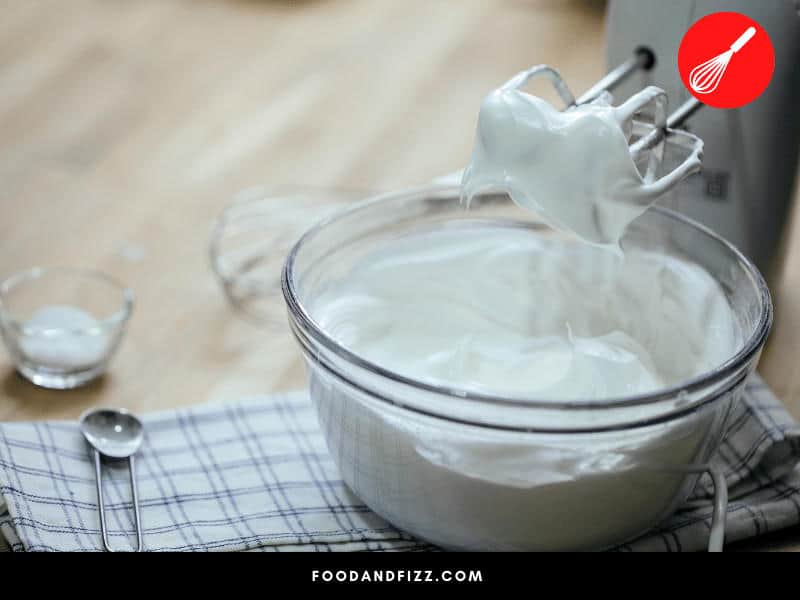
Heating Whipped Cream to Destruction
After only a couple of hours outside of a fridge, being a dairy product, bacteria that cause food poisoning ecstatically get to work on your whipped cream, doing what they do best: reproduce themselves. Soon, your cream is awash with harmful bacteria, and you will probably be none the wiser.
The hotter, the quicker the bacteria multiply. Earlier, I mentioned that you should discard your cream if you have left it out at room temperature of 65°F for two hours.
That two hour is wildly underestimated for cream left out at a room temperature of 75°F, just a 10°F difference! This illustrates the sensitivity of whipped cream to heat.
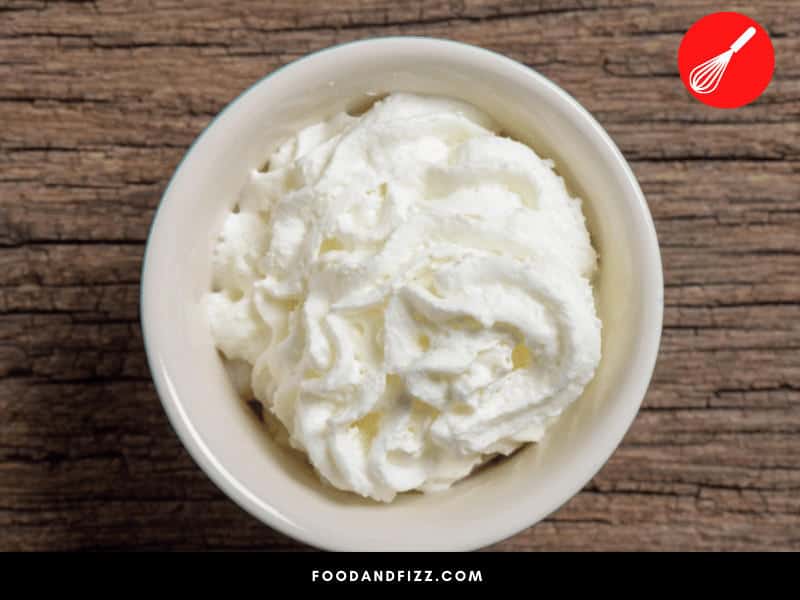
Frequently Asked Questions to At Least How Cold Should You Keep Whipped Cream?
Does Temperature Have the Same Effect on All Types of Cream?
It probably doesn’t come down to the last decimal place but is close enough that you don’t have to worry about it. Much more important than the temperature of the cream is the amount of fat in it. If you have bought cream with less than 30% fat, it doesn’t matter how cold you keep it, it simply won’t whip.
Do I Need to Chill my Cream Bowl and Whipping Utensil Too?
Cream does its best to level its temperature with its environment pretty darned quickly, so if your cream bowl and whipping utensil are warmer than the cream, you run the risk that the temperature of the cream will climb higher. If that temperature exceeds 54°F, it will make it impossible for you to whip the cream. Leaving your cream bowl and whipping equipment in your fridge for 30 minutes to an hour will be sufficient for you to go ahead and successfully whip your cream.
Conclusion At Least How Cold Should You Keep Whipped Cream?
It is possible to keep whipped cream at room temperature, although you shouldn’t do so for longer than two hours. It is also essential to understand that there is a golden temperature for whipping cream, different from the golden temperature range for storing whipped cream.

